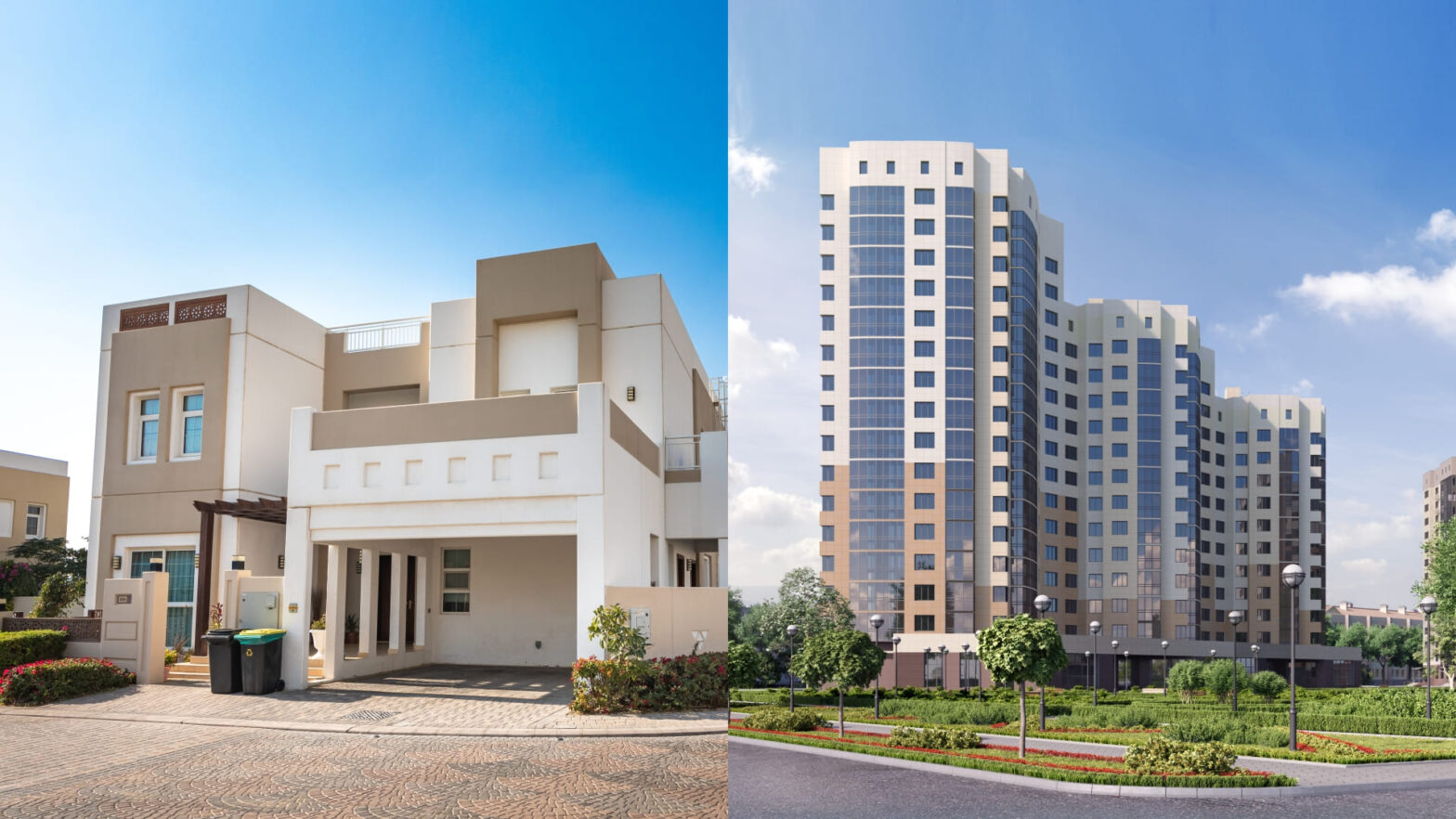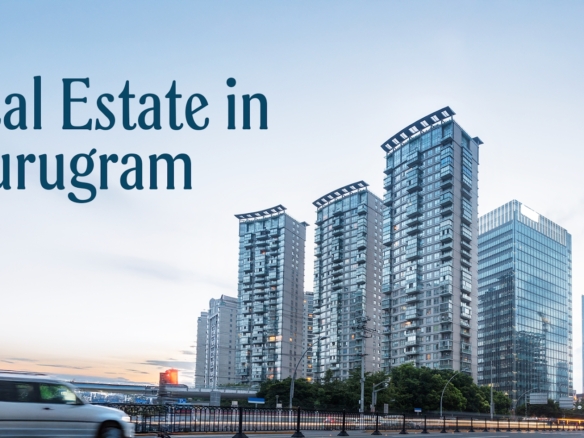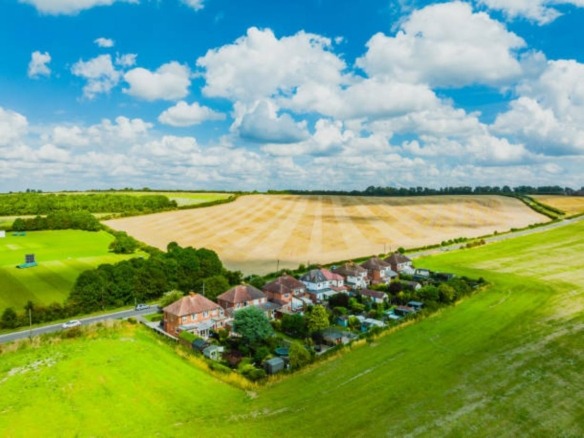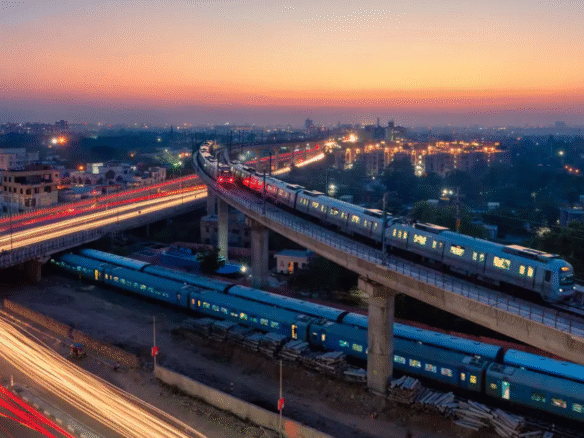Whether flats (apartments) are a good investment depends on various factors, including location, market conditions, and individual financial goals. However, there are several reasons why flats might not always be considered a good investment, particularly in certain contexts like Gurugram or other Indian cities in 2025. Below, I outline key reasons why flats may not be ideal investments, with a focus on general trends and insights, including the recent circle rate hikes in Gurugram for context:
Reasons Flats May Not Be a Good Investment
- High Initial Costs and Low Appreciation in Some Areas:
- Gurugram Context: The recent circle rate hikes (e.g., 20% average increase, up to 145% in areas like Bajghera) have significantly raised property prices. For instance, residential rates in Gurugram village jumped 77% (from ₹25,300 to ₹45,000 per square yard). This increases the cost of acquiring flats, potentially reducing affordability for middle-class buyers.
- General Issue: Flats in oversaturated markets (e.g., Narela in Delhi or certain Gurugram sectors) often see slower price appreciation due to high supply. For example, DDA’s Apna Ghar Awaas Yojana 2025 offers ~7,500 flats in Narela, which may depress price growth due to oversupply.
- High Maintenance Costs:
- Flats, especially in high-rise societies, come with recurring maintenance charges (e.g., ₹2–5 per square foot monthly in Gurugram or Delhi). These include amenities like lifts, security, and common area upkeep, which can erode returns over time.
- Unlike independent houses or plots, flats have additional costs like society fees, parking charges, and occasional repair assessments, which can strain budgets, especially for investors seeking rental income.
- Limited Land Value Appreciation:
- Flats are built on shared land, so investors don’t own the underlying land, unlike plots or independent houses. The land component typically appreciates faster than built-up structures, which depreciate over time due to wear and tear.
- In Gurugram, agricultural land rates (e.g., ₹5 crore per acre in Bajghera) have seen sharper increases than flats in many cases, making land a potentially better long-term investment.
- Rental Yield Challenges:
- Rental yields in Indian cities like Gurugram or Delhi are often low, typically 2–3% annually (e.g., a ₹1 crore flat may fetch ₹20,000–30,000 monthly rent). This is lower than global averages (5–8%) and may not cover maintenance costs or loan EMIs.
- High circle rates increase property taxes and registration costs, further reducing net rental returns.
- Market Volatility and Oversupply:
- Areas like Narela (part of DDA schemes) or certain Gurugram sectors face oversupply due to large-scale projects (e.g., 7,500 flats in DDA’s 2025 scheme). This can lead to stagnant or declining prices, especially in less developed areas with poor connectivity or amenities.
- Speculative buying during real estate booms can lead to price corrections, reducing capital gains potential.
- Liquidity Issues:
- Flats are illiquid assets, meaning they can take months to sell, especially in a buyer’s market. In Gurugram, the sharp circle rate hike has sparked concerns among real estate businesses about reduced demand, potentially increasing selling time.
- High transaction costs (e.g., stamp duty, registration fees) further reduce profitability when selling.
- Depreciation of Building Quality:
- Flats, particularly in budget or mid-segment projects, may face quality issues (e.g., poor construction, water seepage) over time, reducing their value. Older flats (10–20 years) often require significant renovation, lowering resale appeal.
- In contrast, premium projects (e.g., DDA Premium Housing Scheme in Vasant Kunj) may hold value better but come with higher upfront costs.
- Regulatory and Policy Risks:
- Changes in government policies, like Gurugram’s circle rate hikes or RERA compliance issues, can impact profitability. For instance, increased circle rates raise stamp duty (5–7% of property value), making transactions costlier.
- Delays in possession (common in under-construction projects) or legal disputes over property titles can tie up capital without returns.
- Opportunity Cost:
- Investing in flats ties up significant capital that could yield higher returns in other assets like stocks, mutual funds, or commercial properties. For example, equity markets in India have historically delivered 10–12% annualized returns, compared to real estate’s 5–8% in many urban areas.
- Commercial properties often offer higher rental yields (5–10%) than residential flats.
- Social and Lifestyle Factors:
- Flats in high-density areas may face issues like parking shortages, water scarcity, or poor infrastructure, reducing tenant or buyer appeal. In Gurugram, urban buyers have expressed concerns about affordability post-circle rate hikes.
- Changing preferences (e.g., demand for larger homes post-COVID) may make smaller flats less desirable.
When Flats Might Still Be a Good Investment
Despite these challenges, flats can be a good investment in specific scenarios:
- Prime Locations: Flats in well-connected, high-demand areas (e.g., Golf Course Road, Gurugram, or Vasant Kunj, Delhi) tend to appreciate faster and offer better rental yields.
- Affordable Schemes: DDA’s 2025 schemes (e.g., Sabka Ghar Awaas Yojana) offer 20–25% discounts for specific groups, improving affordability.
- Long-Term Horizon: Holding flats for 10+ years in developing areas (e.g., Dwarka Expressway) may yield good returns as infrastructure improves.
- PMAY Benefits: Subsidies under PMAY (up to ₹2.67 lakh) can reduce costs for eligible buyers taking home loans.
How to Mitigate Risks
- Research Location: Choose areas with strong growth potential (e.g., near metro lines, commercial hubs).
- Check Developer Credibility: Opt for reputed builders to avoid construction delays or quality issues.
- Diversify Investments: Balance real estate with other assets to reduce risk.
- Monitor Policies: Stay updated on circle rate changes, tax policies, and RERA regulations.
Conclusion
Flats may not be the best investment due to high costs, low rental yields, oversupply in certain areas, and limited land value appreciation. In Gurugram, the 2025 circle rate hikes have made flats costlier, potentially reducing demand and returns for investors. However, flats in prime locations or under subsidized schemes (like DDA’s 2025 offerings) can still be viable for long-term investors or end-users. Always assess market conditions, location, and your financial goals before investing.
फ्लैट्स (अपार्टमेंट्स) का निवेश अच्छा है या नहीं, यह कई कारकों पर निर्भर करता है, जैसे स्थान, बाजार की स्थिति और व्यक्तिगत वित्तीय लक्ष्य। हालांकि, कई कारणों से फ्लैट्स हमेशा अच्छा निवेश नहीं माने जाते, खासकर गुरुग्राम या अन्य भारतीय शहरों में 2025 के संदर्भ में। नीचे मैं उन प्रमुख कारणों को समझाता हूँ कि फ्लैट्स क्यों अच्छा निवेश नहीं हो सकते, साथ ही गुरुग्राम में हाल के सर्कल रेट वृद्धि के संदर्भ में जानकारी देता हूँ:
फ्लैट्स अच्छा निवेश क्यों नहीं हो सकते
- उच्च प्रारंभिक लागत और कम मूल्यवृद्धि:
- गुरुग्राम संदर्भ: 1 अगस्त 2025 से लागू नए सर्कल रेट्स में औसतन 20% की वृद्धि हुई है, कुछ क्षेत्रों जैसे बजघेड़ा में 145% और सरहौल में 108% तक। उदाहरण के लिए, गुरुग्राम गांव में रिहायशी रेट 77% बढ़कर ₹25,300 से ₹45,000 प्रति वर्ग गज हो गया। इससे फ्लैट्स खरीदना महंगा हो गया है, जिससे मध्यम वर्ग के लिए वहनीयता कम हो सकती है।
- सामान्य समस्या: अधिक आपूर्ति वाले क्षेत्रों (जैसे दिल्ली का नरेला या गुरुग्राम के कुछ सेक्टर) में फ्लैट्स की कीमतों में वृद्धि धीमी होती है। उदाहरण के लिए, DDA की अपना घर आवास योजना 2025 में नरेला में ~7,500 फ्लैट्स उपलब्ध हैं, जिससे कीमतें स्थिर रह सकती हैं।
- उच्च रखरखाव लागत:
- हाई-राइज सोसाइटी में फ्लैट्स पर नियमित रखरखाव शुल्क (जैसे गुरुग्राम या दिल्ली में ₹2–5 प्रति वर्ग फुट मासिक) लगता है। इसमें लिफ्ट, सुरक्षा, और सामान्य क्षेत्रों का रखरखाव शामिल है, जो समय के साथ रिटर्न को कम कर सकता है।
- स्वतंत्र मकानों या प्लॉट्स के विपरीत, फ्लैट्स में अतिरिक्त लागतें जैसे सोसाइटी शुल्क, पार्किंग शुल्क, और मरम्मत के लिए विशेष शुल्क निवेशकों के लिए बोझ बन सकती हैं।
- जमीन के मूल्य में सीमित वृद्धि:
- फ्लैट्स साझा जमीन पर बनाए जाते हैं, इसलिए निवेशक को जमीन का स्वामित्व नहीं मिलता, जो प्लॉट्स या स्वतंत्र मकानों में होता है। जमीन की कीमत आमतौर पर इमारतों की तुलना में तेजी से बढ़ती है, क्योंकि इमारतें समय के साथ घिसाव के कारण मूल्य खोती हैं।
- गुरुग्राम में, कृषि भूमि की दरें (जैसे बजघेड़ा में ₹5 करोड़ प्रति एकड़) फ्लैट्स की तुलना में तेजी से बढ़ी हैं, जिससे जमीन लंबी अवधि में बेहतर निवेश हो सकती है।
- कम किराये की आय:
- भारत में किराये की आय (रेंटल यील्ड) आमतौर पर 2–3% वार्षिक होती है (उदाहरण: ₹1 करोड़ का फ्लैट ₹20,000–30,000 मासिक किराया दे सकता है)। यह वैश्विक औसत (5–8%) से कम है और रखरखाव लागत या लोन EMI को कवर नहीं कर सकता।
- सर्कल रेट्स में वृद्धि से प्रॉपर्टी टैक्स और रजिस्ट्रेशन लागत बढ़ती है, जिससे शुद्ध किराये की आय और कम हो जाती है।
- बाजार में अस्थिरता और अधिक आपूर्ति:
- नरेला (DDA योजनाओं का हिस्सा) या गुरुग्राम के कुछ सेक्टरों में बड़े पैमाने पर प्रोजेक्ट्स के कारण अधिक आपूर्ति है (जैसे DDA 2025 में 7,500 फ्लैट्स)। इससे कीमतें स्थिर रह सकती हैं या कम हो सकती हैं, खासकर कम विकसित क्षेत्रों में जहां कनेक्टिविटी या सुविधाएं कम हैं।
- रियल एस्टेट बूम के दौरान सट्टा खरीद से कीमतों में सुधार (correction) हो सकता है, जिससे पूंजीगत लाभ कम हो।
- तरलता की समस्या (Liquidity Issues):
- फ्लैट्स को बेचना मुश्किल हो सकता है, खासकर खरीदारों के बाजार में। गुरुग्राम में सर्कल रेट वृद्धि से मांग कम होने की आशंका है, जिससे बिक्री में समय लग सकता है।
- उच्च लेनदेन लागत (जैसे स्टांप ड्यूटी, रजिस्ट्रेशन शुल्क) लाभ को और कम करती है।
- इमारत की गुणवत्ता में कमी:
- बजट या मध्यम-खंड के प्रोजेक्ट्स में फ्लैट्स में समय के साथ गुणवत्ता की समस्याएं (जैसे खराब निर्माण, पानी का रिसाव) हो सकती हैं, जिससे उनका मूल्य कम हो जाता है। 10–20 साल पुराने फ्लैट्स को पुनर्विक्रय के लिए महंगे नवीनीकरण की जरूरत पड़ सकती है।
- प्रीमियम प्रोजेक्ट्स (जैसे DDA प्रीमियम हाउसिंग स्कीम, वसंत कुंज) बेहतर मूल्य बनाए रख सकते हैं, लेकिन उनकी प्रारंभिक लागत अधिक होती है।
- नियामक और नीतिगत जोखिम:
- सरकारी नीतियों में बदलाव, जैसे गुरुग्राम में सर्कल रेट वृद्धि या RERA अनुपालन मुद्दे, लाभप्रदता को प्रभावित कर सकते हैं। उदाहरण के लिए, सर्कल रेट बढ़ने से स्टांप ड्यूटी (प्रॉपर्टी मूल्य का 5–7%) बढ़ गई है।
- निर्माणाधीन प्रोजेक्ट्स में देरी या संपत्ति के स्वामित्व पर कानूनी विवाद पूंजी को बिना रिटर्न के बांध सकते हैं।
- अवसर लागत (Opportunity Cost):
- फ्लैट्स में निवेश बड़ी पूंजी को बांध देता है, जिसे स्टॉक, म्यूचुअल फंड्स, या वाणिज्यिक संपत्तियों में बेहतर रिटर्न मिल सकता है। भारत में इक्विटी बाजार ने ऐतिहासिक रूप से 10–12% वार्षिक रिटर्न दिया है, जबकि रियल एस्टेट में यह 5–8% है।
- वाणिज्यिक संपत्तियां अक्सर रिहायशी फ्लैट्स की तुलना में अधिक किराये की आय (5–10%) देती हैं।
- सामाजिक और जीवनशैली कारक:
- उच्च-घनत्व वाले क्षेत्रों में फ्लैट्स में पार्किंग की कमी, पानी की कमी, या खराब बुनियादी ढांचे जैसी समस्याएं हो सकती हैं, जिससे किरायेदारों या खरीदारों की रुचि कम हो। गुरुग्राम में, शहरी खरीदारों ने सर्कल रेट वृद्धि के बाद वहनीयता पर चिंता जताई है।
- बदलती प्राथमिकताएं (जैसे कोविड के बाद बड़े घरों की मांग) छोटे फ्लैट्स को कम आकर्षक बना सकती हैं।
कब हो सकते हैं फ्लैट्स अच्छा निवेश
इन चुनौतियों के बावजूद, कुछ परिस्थितियों में फ्लैट्स अच्छा निवेश हो सकते हैं:
- प्रमुख स्थान: अच्छी कनेक्टिविटी और मांग वाले क्षेत्रों (जैसे गुरुग्राम का गोल्फ कोर्स रोड या दिल्ली का वसंत कुंज) में फ्लैट्स तेजी से मूल्यवृद्धि करते हैं और बेहतर किराये की आय देते हैं।
- सस्ती योजनाएं: DDA की 2025 योजनाएं (जैसे सबका घर आवास योजना) विशिष्ट समूहों के लिए 20–25% छूट देती हैं, जिससे वहनीयता बढ़ती है।
- लंबी अवधि का दृष्टिकोण: उभरते क्षेत्रों (जैसे द्वारका एक्सप्रेसवे) में 10+ साल तक फ्लैट्स रखने से बुनियादी ढांचे के सुधार के साथ अच्छा रिटर्न मिल सकता है।
- PMAY लाभ: पात्र खरीदारों को होम लोन पर PMAY के तहत ₹2.67 लाख तक की सब्सिडी मिल सकती है।
जोखिम कम करने के उपाय
- स्थान का शोध: मजबूत विकास क्षमता वाले क्षेत्र (जैसे मेट्रो लाइनों या वाणिज्यिक केंद्रों के पास) चुनें।
- डेवलपर की विश्वसनीयता जांचें: निर्माण में देरी या गुणवत्ता समस्याओं से बचने के लिए प्रतिष्ठित बिल्डर चुनें।
- निवेश में विविधता: जोखिम कम करने के लिए रियल एस्टेट को अन्य परिसंपत्तियों के साथ संतुलित करें।
- नीतियों पर नजर: सर्कल रेट, कर नीतियों और RERA नियमों पर अपडेट रहें।
निष्कर्ष
फ्लैट्स उच्च लागत, कम किराये की आय, कुछ क्षेत्रों में अधिक आपूर्ति, और जमीन के मूल्य में सीमित वृद्धि के कारण हमेशा अच्छा निवेश नहीं हो सकते। गुरुग्राम में 2025 के सर्कल रेट वृद्धि ने फ्लैट्स को और महंगा कर दिया है, जिससे मांग और रिटर्न कम हो सकता है। हालांकि, प्रमुख स्थानों पर या सब्सिडी वाली योजनाओं (जैसे DDA 2025) में फ्लैट्स लंबी अवधि के निवेशकों या स्व-उपयोगकर्ताओं के लिए उपयुक्त हो सकते हैं। निवेश से पहले बाजार की स्थिति, स्थान और अपने वित्तीय लक्ष्यों का आकलन करें।






Join The Discussion